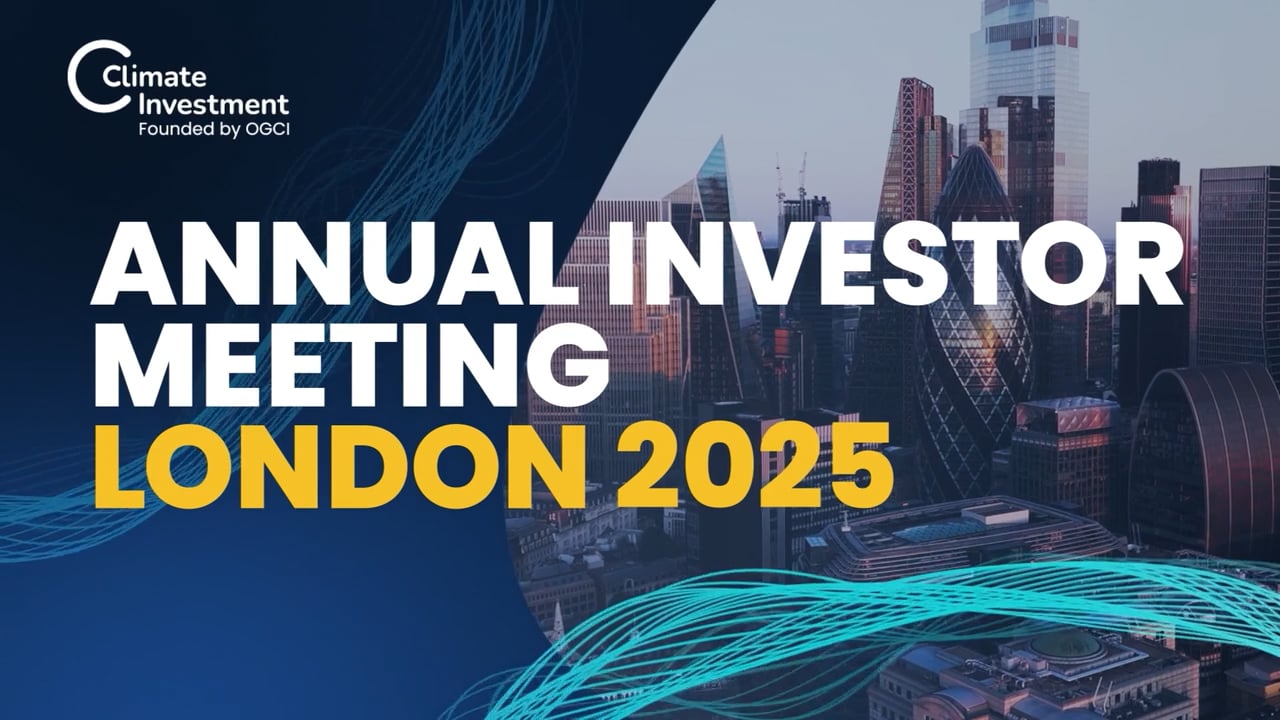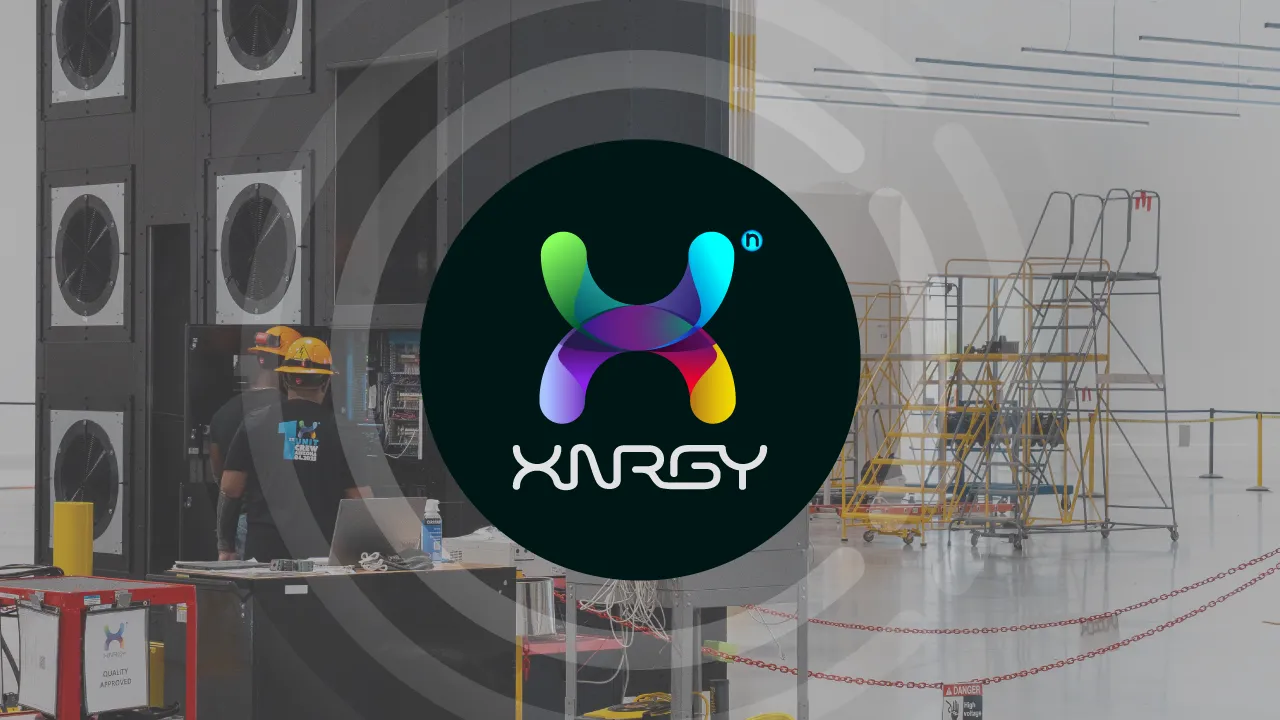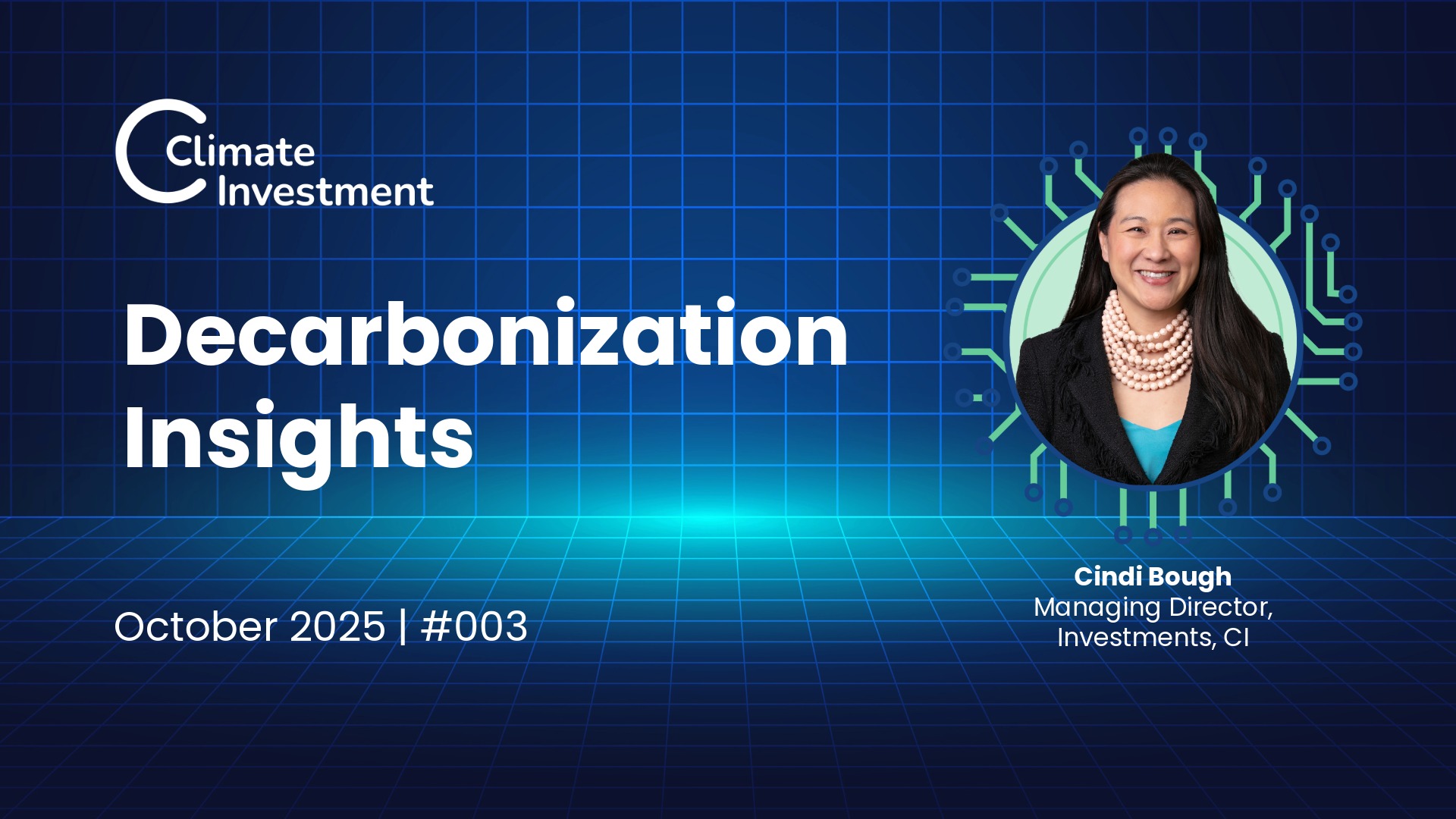What We Learned from Our Annual Investor Meeting: AI’s Role in Industrial Decarbonization
30 October 2025
The Climate Investment Team is still buzzing after our Annual Investor Meeting which we held in London three weeks ago. In this fourth instalment of our newsletter we share takeaways from our gathering, where we examined how artificial intelligence is bringing powerful new decarbonization solutions for industry while also creating difficult infrastructure challenges.
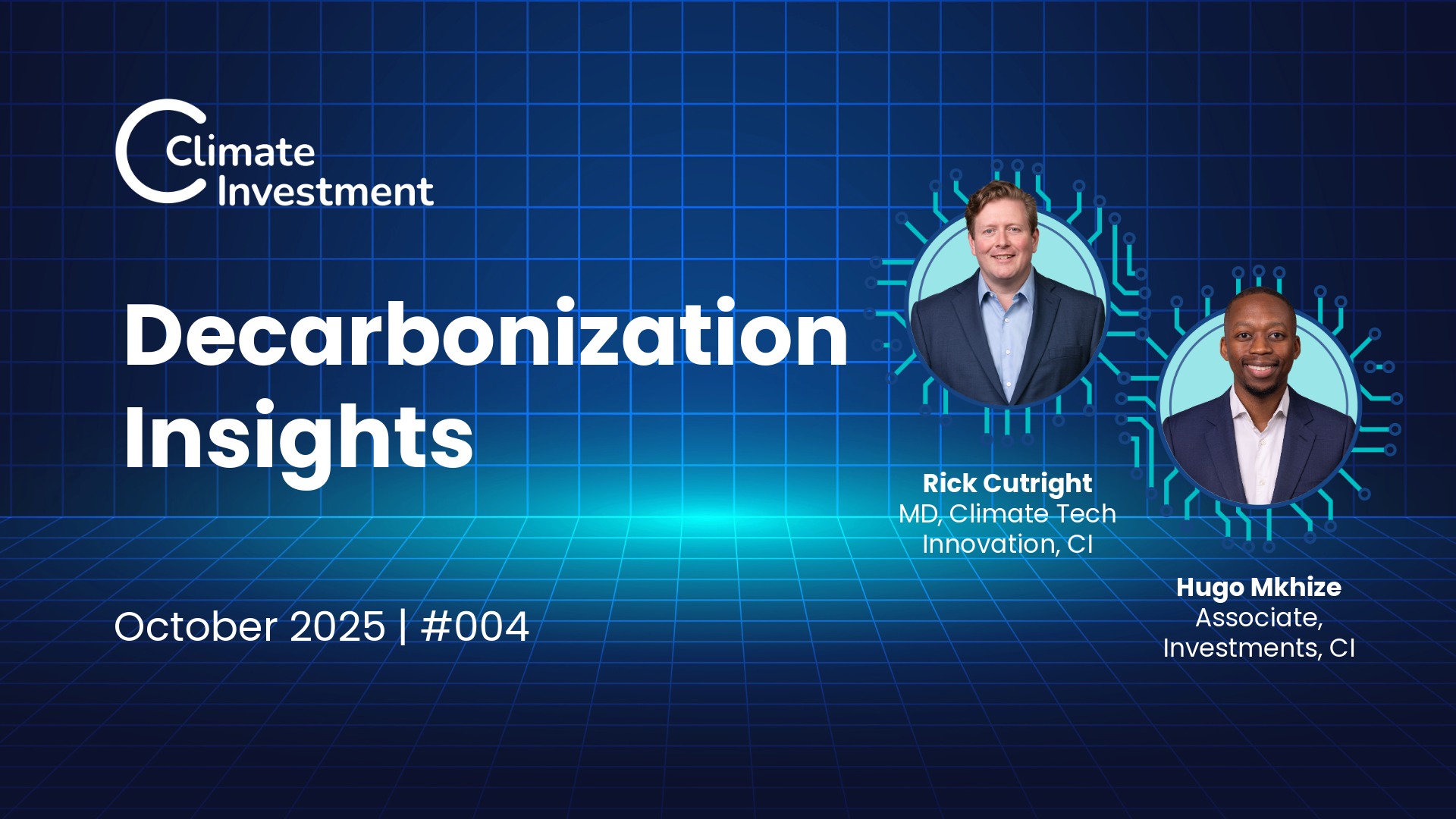

The Convergence of AI and Climate Tech
Our Annual Investor Meeting (AIM 2025) brought together leaders from across the industrial landscape to explore how disruptive technologies, particularly artificial intelligence, are bringing both challenges and opportunities in industrial decarbonization. Under the theme “Disruption and Opportunity” we examined how AI’s rapid evolution—from perception to autonomy to interpretation and action—is transforming the industrial landscape. The enriching and nuanced conversations over the two days explored not just what AI can do, but what’s holding it back—and what that means for global emissions.
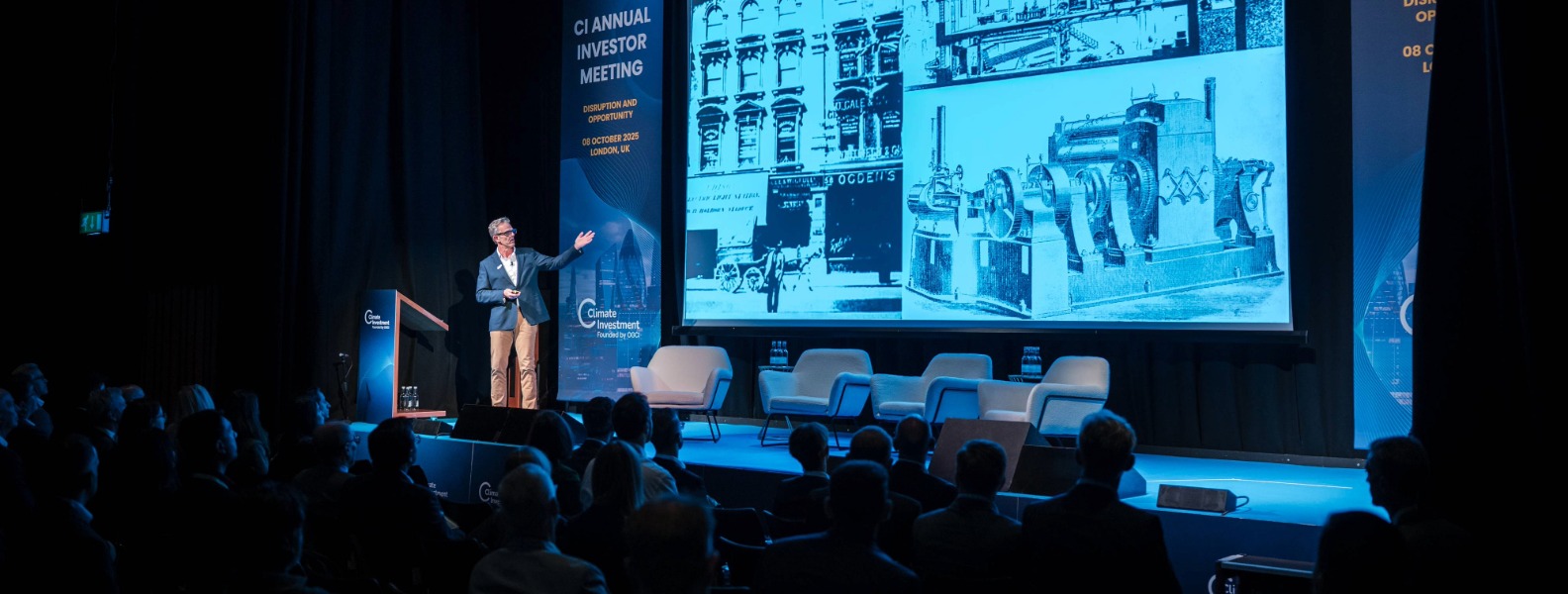

CI’s Matthew Harwood opening presentation at AIM 2025
Beyond Perception: The Expanding Intelligence of Industry
AI is fundamentally changing how industrial systems sense and understand the world. Through advanced sensing, visual analytics, and large language models, machines are now beginning to “see” and “hear” much like seasoned operators. As one AIM speaker reflected, early naval engineers could identify the state of an entire power plant by instinct—by sound, vibration, and smell. Today, systems like those from XOCEAN and Zeitview are digitizing that intuition, capturing sensory data at unprecedented scale and turning it into actionable intelligence.
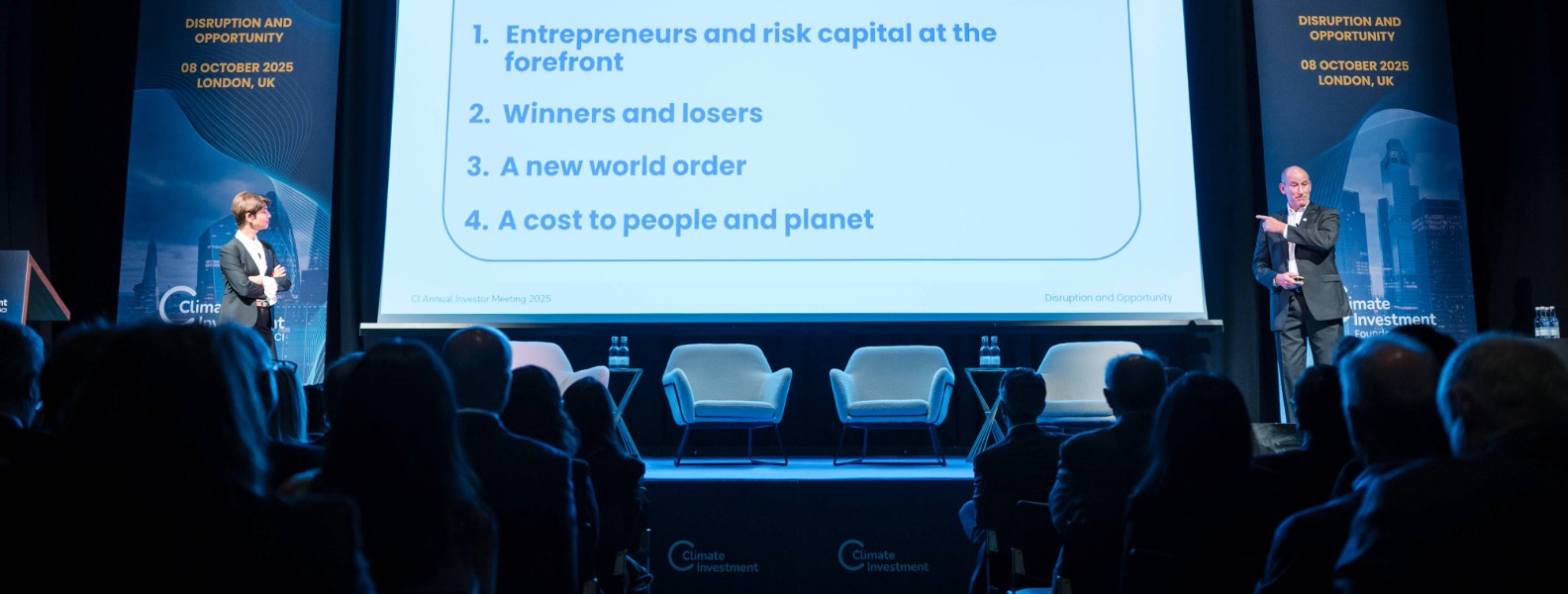

The Arc of Industrial Revolutions and the Climate Transition with CI’s Pratima Rangarajan and Marc van den Berg
But perception is only the foundation. Interpretation—the ability for systems to reason, explain, and improve—emerged as one of the most profound shifts in AI for industry that was discussed at AIM. Companies such as Fero Labs and SensorUp demonstrated how industrial AI can capture human expertise, link it to real-time operations, and unify operational data.
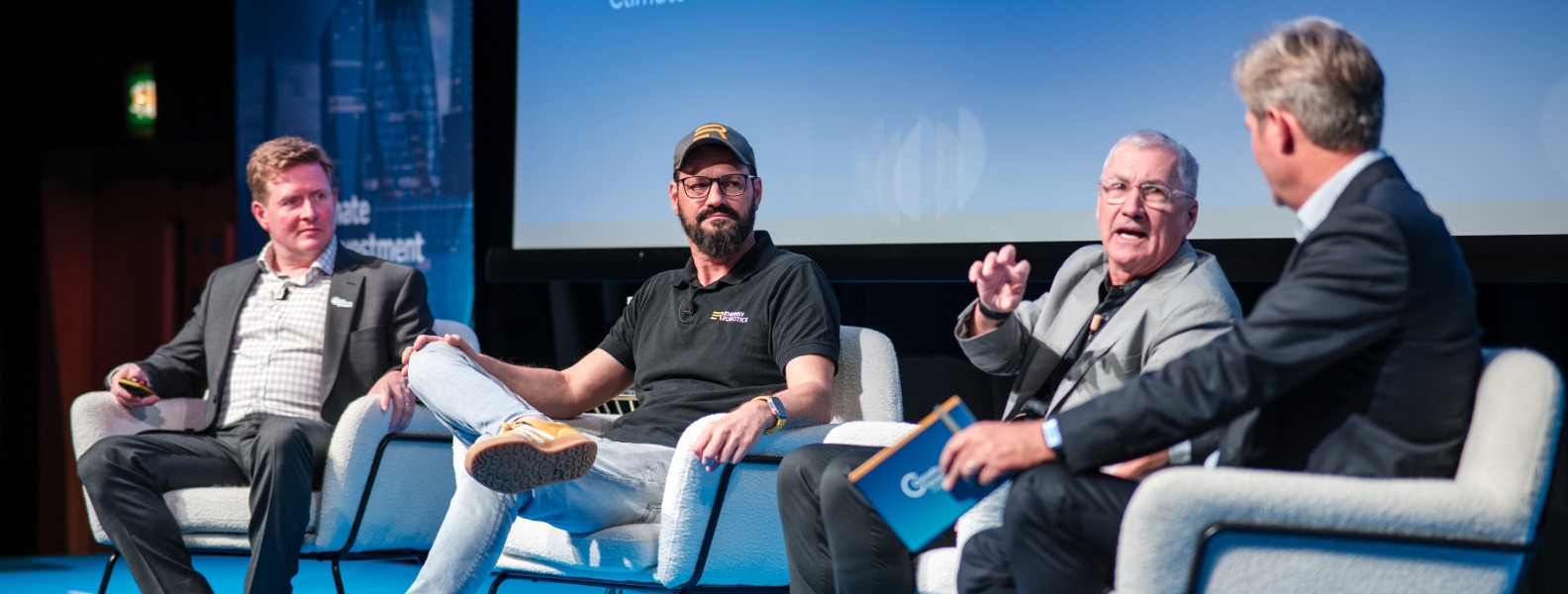

AI in the Industrial Landscape panel discussion
From Autonomy to Convergence
The next theme we examined was Autonomy—taking the perception and interpretation to the coal face via robotics. Autonomy is critical for safety and efficiency. Robots from ANYbotics now carry out inspections in hazardous environments, reducing risks and labor pressures amid a shrinking industrial workforce. Energy Robotics’ autonomous units feed data into “evergreen digital twins” — continuously learning virtual replicas of physical assets. This convergence of autonomy, sensing, and analytics means AI can now connect perception (what’s happening) with interpretation (why it matters) and action (what to do next).
As AIM participants noted, what’s most transformative isn’t replacing the onsite workforce but empowering them. AI systems are freeing experts from repetitive, dangerous, or time-consuming tasks, allowing them to focus on innovation and problem-solving. “No one wakes up wanting to do dirty, dull, dangerous tasks — AI gives people back their time and purpose.”


ANYbotics demonstration
Lessons from the Barriers: Why AI Still Has Work To Do
While enthusiasm for AI is undeniable, the Barriers to Adoption session—led by Aramco Ventures—brought critical realism. Despite billions invested, 95% of enterprises don’t achieve expected returns from AI(1). The reasons are familiar but profound: a preference for proven technology, fragmented data, integration costs, and cultural resistance.
Industrial users “want to be second, not first.” The appetite for innovation exists, but operational reliability and regulation slow adoption. Even in leading companies, successful deployment often depends on individual champions—leaders willing to experiment, accept risk, and persist through failed pilots.
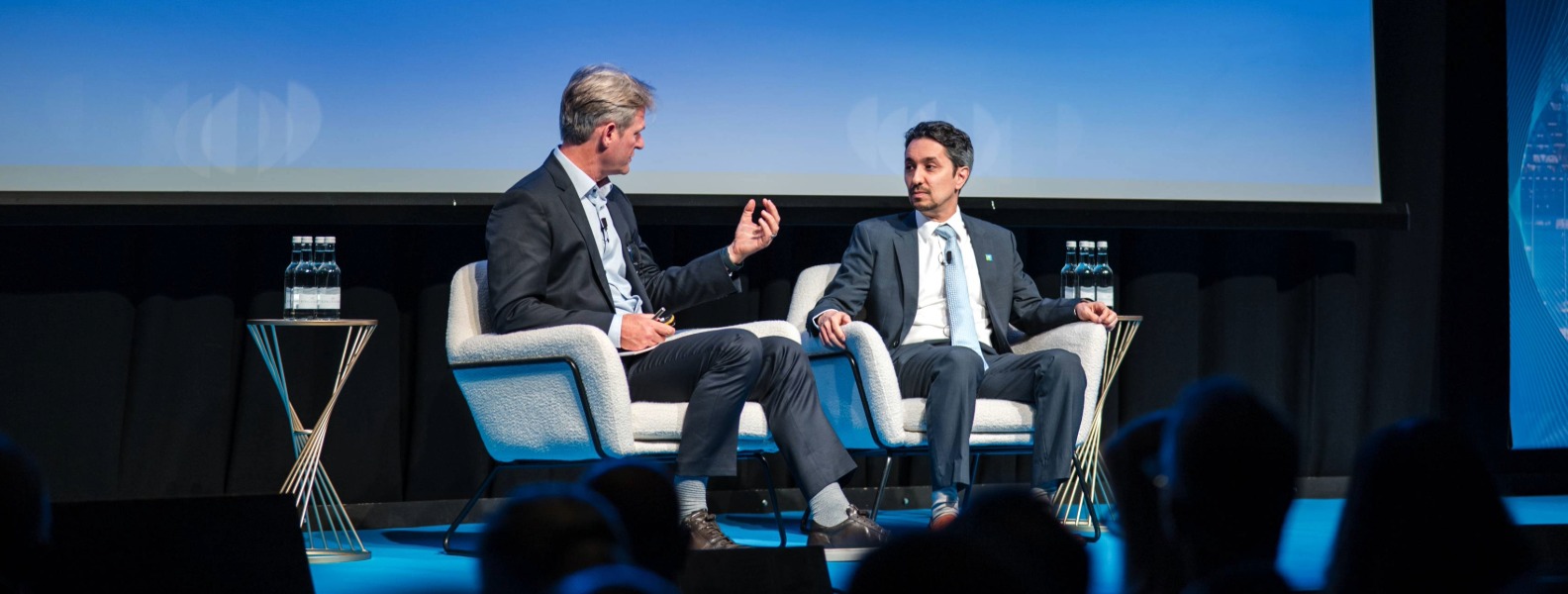

Aramco Ventures’ Mahdi Aladel discussion with Daniel Palmer
Regional differences were another key theme. China’s capacity for rapid iteration and scaling was recognised as unmatched, especially in sustainability and robotics, while Europe’s regulatory caution—centred on privacy and safety—slows adoption despite strong policy support. The U.S. remains a leader in foundational AI models and chips, but global competition is intensifying.
AIM participants also surfaced a paradox: the same AI systems driving efficiency are amplifying infrastructure constraints. Data centre power demand is set to double within five years, potentially consuming 20% of global electricity growth in certain advanced economies(2). New efficiency technologies—from neuromorphic chips to liquid cooling—will be essential to balance AI’s benefits with its energy footprint.
Leadership, Pragmatism, and Partnership
A highlight of AIM was a conversation between Climate Investment CEO, Dr. Pratima Rangarajan, and Patrick Pouyanné, CEO of TotalEnergies, who spoke candidly about AI, climate, and corporate responsibility. His message was pragmatic: real transformation depends on consistency, affordability, and collaboration.
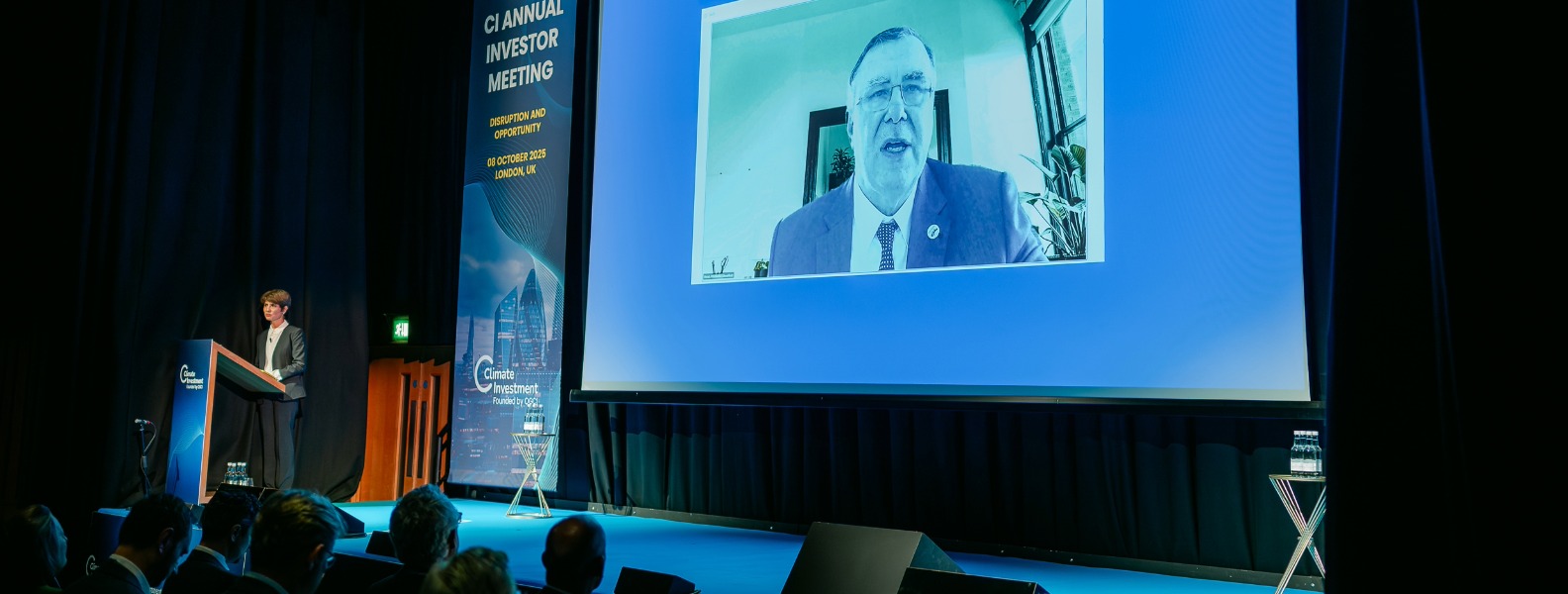

TotalEnergies’ Patrick Pouyanné presentation
The Oil & Gas majors are integrating AI and robotics across operations—from drones that safely inspect vessels and detect methane leaks, to machine learning systems that optimize refinery output. However, it was stressed that the transition must be measured: “AI is at the beginning of a revolution. It will take time to organize and implement because trust and reliability matter as much as innovation.”
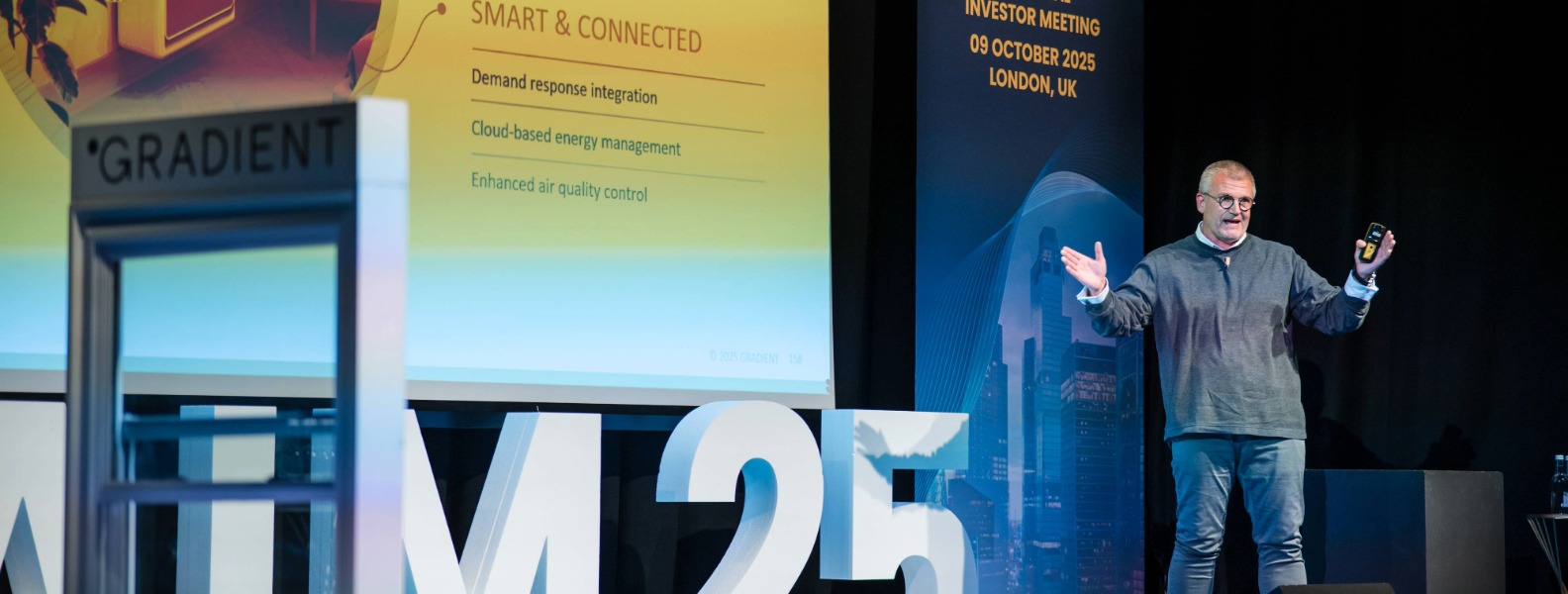

Gradient’s Patrick Bischoff presentation and demonstration
The conversation underscored the value of partnerships like the Oil & Gas Climate Initiative (OGCI) noting that collective intelligence often outperforms isolated efforts. Through OGCI and Climate Investment, TotalEnergies and its peers have co-invested in methane abatement, robotics, and digital monitoring solutions—turning competition into collaboration for climate impact.
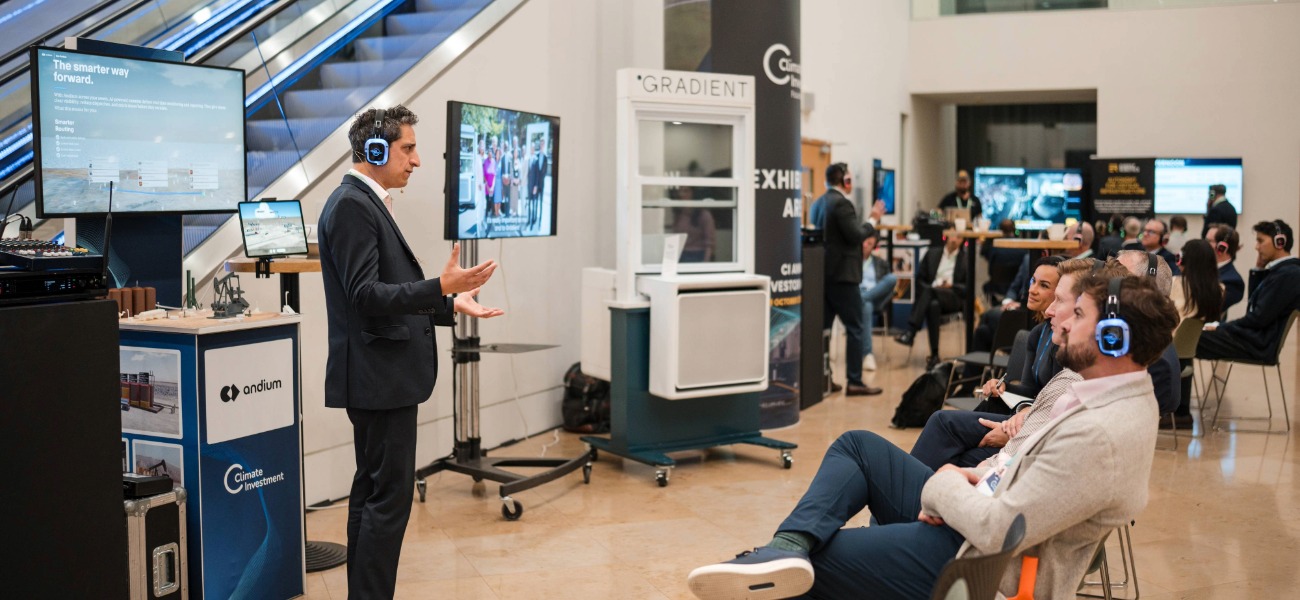

Portfolio showcase day
The CI Lens: Why We’re Investing Here
As we look across the insights from AIM 2025, a clear picture emerges of both challenge and opportunity in industrial decarbonization. AI is simultaneously a driver of unprecedented energy demand and a powerful tool for optimizing industrial systems.
For climate investors, the message is straightforward: decarbonization is no longer about inventing new technologies, but about deploying the right ones under constraint. The systems that can be built, maintained, and upgraded quickly will cut carbon first. The investable edge lies in manufacturable hardware, modular designs, circular supply chains, and intelligent software that extends the life of what already exists.
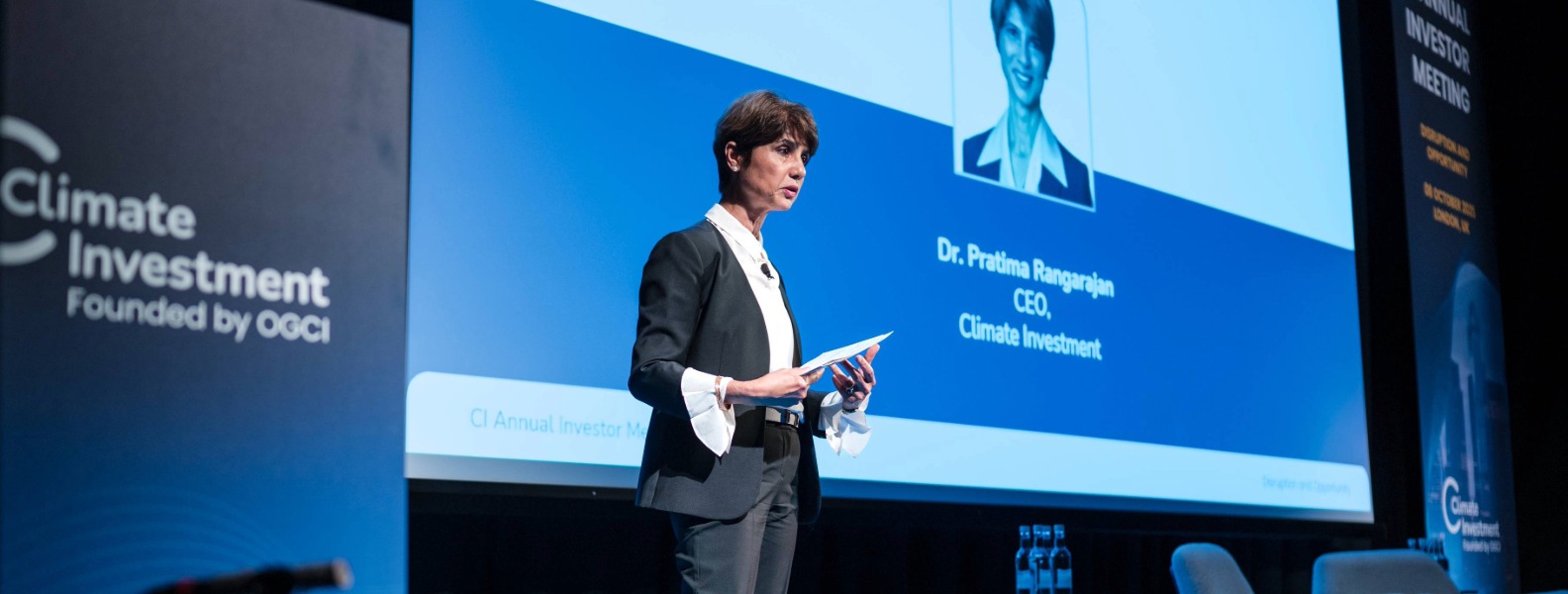

CI’s Pratima Rangarajan closing remarks at AIM 2025
The transition won’t be defined by who builds fastest, but by who builds without losing the gains we’ve already made. That’s the new test for climate capital—whether it can keep the digital economy growing without erasing the very progress it was meant to deliver.
1Data presented at Climate Investment’s AIM 2025, “MIT Says 95% Of Enterprise AI Fails — Here’s What The 5% Are Doing Right”, Forbes
2Data presented at Climate Investment’s AIM 2025, citing the International Energy Agency (IEA)’s Energy and AI report
